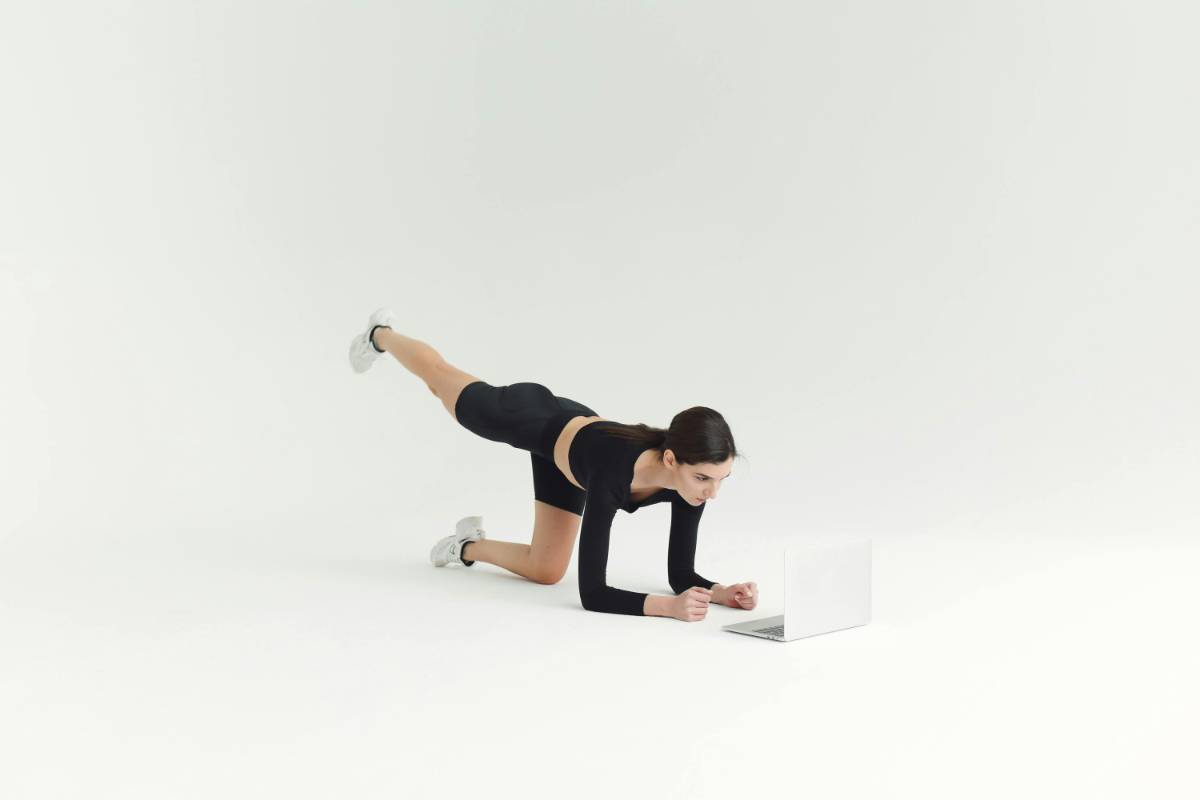HIIT Workouts You Can Do at Home

5 min read
|24 Oct 2025High-Intensity Interval Training (HIIT) is a fantastic way to get an effective workout in a short amount of time, and the best part is that you don’t need a gym or fancy equipment to reap the benefits. HIIT workouts can be easily performed at home using just your body weight and minimal space. In this article, we’ll explore some HIIT workouts you can do at home to boost your fitness levels and burn calories.
Bodyweight HIIT Workouts
Bodyweight HIIT workouts are perfect for home fitness. They require no equipment and can be modified to suit any fitness level. Here are some effective bodyweight HIIT exercises:
Burpees
Burpees are a full-body exercise that combines a squat, jump, and push-up. Perform burpees for 30 seconds, followed by a 15-second rest. This exercise enhances cardiovascular endurance and builds strength.
Jumping Jacks
Jumping jacks are a classic cardio move that gets your heart rate up. Do jumping jacks for 30 seconds, then rest for 15 seconds. This exercise is great for warming up and boosting overall fitness.
Mountain Climbers
Mountain climbers target the core, shoulders, and legs. Start in a plank position and alternate bringing your knees toward your chest. Perform for 30 seconds, followed by a 15-second rest.
High Knees
High knees involve running in place while lifting your knees as high as possible. Do high knees for 30 seconds and rest for 15 seconds. This exercise improves cardiovascular fitness and leg strength.
Sample Bodyweight HIIT Routine
Here’s a sample bodyweight HIIT routine you can try at home:
Burpees – 30 seconds
Rest – 15 seconds
Jumping Jacks – 30 seconds
Rest – 15 seconds
Mountain Climbers – 30 seconds
Rest – 15 seconds
High Knees – 30 seconds
Rest – 15 seconds
Repeat the circuit 3-4 times for a complete workout.
HIIT with Minimal Equipment
If you have access to some basic equipment, you can enhance your HIIT workouts at home with a few additions. Here are some options:
Dumbbell HIIT
Incorporate dumbbells into your HIIT routine for added resistance. Perform exercises like dumbbell thrusters, dumbbell swings, and dumbbell snatches. Alternate between high-intensity intervals and short rests.
Resistance Bands
Resistance bands can be used for a variety of HIIT exercises, such as resistance band squats, banded high knees, and banded push-ups. These exercises target different muscle groups and enhance workout intensity.
Kettlebell HIIT
Kettlebells are versatile for HIIT workouts. Try kettlebell swings, kettlebell goblet squats, and kettlebell snatches. Perform each exercise for 30 seconds, followed by a 15-second rest.
Sample HIIT Routine with Dumbbells
Here’s a sample HIIT routine using dumbbells:
Dumbbell Thrusters – 30 seconds
Rest – 15 seconds
Dumbbell Swings – 30 seconds
Rest – 15 seconds
Dumbbell Snatches – 30 seconds
Rest – 15 seconds
Dumbbell Squat Press – 30 seconds
Rest – 15 seconds
Repeat the circuit 3-4 times for an effective workout.
Tips for Effective Home HIIT Workouts
To maximize the effectiveness of your HIIT workouts at home, consider these tips:
Create a Dedicated Space
Set up a specific area in your home for workouts to ensure you have enough space and can focus on your exercises.
Stay Consistent
Consistency is key to seeing results with HIIT. Aim to include HIIT workouts in your routine 2-3 times per week.
Mix It Up
Keep your workouts interesting by varying the exercises and formats. This variety can prevent boredom and keep you motivated.
Warm Up and Cool Down
Always include a warm-up before starting your HIIT routine and a cool-down afterward to prevent injury and aid in recovery.
Conclusion
HIIT workouts are a great way to get fit at home, whether you use bodyweight exercises or minimal equipment. By incorporating these workouts into your routine, you can enjoy the benefits of HIIT, including improved fitness and calorie burn, without needing a gym. Embrace the flexibility and efficiency of home HIIT workouts and achieve your fitness goals with convenience and effectiveness.
MORE ARTICLES

4 min read | 17 Dec 2025
Seasonal Workout Routines to Keep Your Fitness Fresh
Adapting your workout routine to the changing seasons can help keep your fitness regime fresh and exciting. Seasonal workouts not only help you stay motivated but also allow you to take advantage of the unique opportunities each season offers. Here’s a comprehensive guide to seasonal workout routines that can keep you engaged throughout the year, ensuring you remain consistent and motivated while achieving your fitness goals.

4 min read | 16 Dec 2025
How to Avoid Common Mistakes in Your Workout Routine
Having a well-structured workout routine is crucial for achieving fitness goals and maintaining overall health. However, even with the best intentions, it's easy to make mistakes that can hinder progress or lead to injury. Here’s a guide to help you avoid common mistakes in your workout routine and ensure you get the most out of your fitness efforts.

4 min read | 15 Dec 2025
Effective Core Workouts for Strength and Stability
A strong and stable core is essential for overall fitness and injury prevention. Effective core workouts target not only the abdominal muscles but also the lower back, hips, and pelvis. Incorporating a variety of core exercises into your routine can enhance your strength, stability, and overall athletic performance. Here’s a guide to some of the most effective core workouts to include in your fitness regimen.

2 min read | 14 Dec 2025
How to Include Functional Training in Your Fitness Regimen
Functional training focuses on exercises that mimic everyday movements, helping you build strength, stability, and coordination for real-life activities. Integrating functional training into your fitness regimen can enhance your overall performance and improve your ability to perform daily tasks. Here’s how you can effectively include functional training in your workout routine.

2 min read | 13 Dec 2025
The Benefits of Compound Exercises in Your Workout Routine
Incorporating compound exercises into your workout routine can significantly enhance your fitness results. These exercises target multiple muscle groups simultaneously, offering numerous benefits over isolation exercises that focus on a single muscle group. Here’s a closer look at the advantages of compound exercises and how they can improve your overall fitness.

3 min read | 12 Dec 2025
Tips for Staying Motivated with Your Workout Routine
Staying motivated with your workout routine can be challenging, especially when progress seems slow or life gets busy. However, maintaining motivation is crucial for achieving your fitness goals and making exercise a consistent part of your lifestyle. Here are some effective tips to help you stay motivated and committed to your workout routine.
RECENT POSTS
1
The Benefits of Using Beard Oil
5 min read | 29 Nov 20252
How to Maintain a Healthy Beard
5 min read | 28 Nov 20253
The Importance of Foot Exfoliation
2 min read | 27 Nov 20254
The Role of Moisturizers in Hand and Foot Care
4 min read | 26 Nov 20255
Best Practices for Nail Care at Home
5 min read | 25 Nov 20256
How to Perform a DIY Pedicure at Home
5 min read | 24 Nov 2025MORE POSTS

10-Minute Workouts for Busy Schedules
5 min read | 30 Nov 2025
How to Create a Balanced Workout Routine
5 min read | 29 Nov 2025
Beginner’s Guide to Strength Training
3 min read | 28 Nov 2025
Mindful Eating: How It Can Help You Lose Weight
4 min read | 27 Nov 2025
How to Overcome Weight Loss Plateaus
2 min read | 26 Nov 2025
